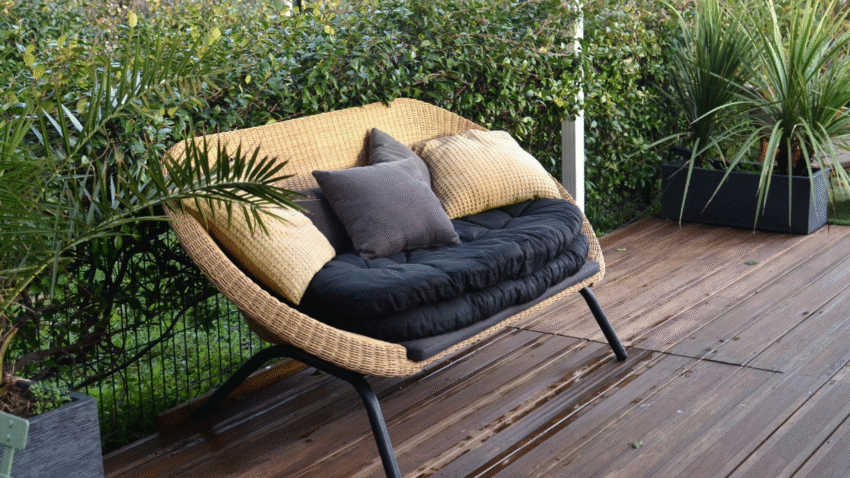Introduction
A crackling fire pit is one of the best ways to turn an ordinary patio into the ultimate gathering place. Learning how to build a fire pit into a patio design allows you to create warmth, ambience, and functionality in your outdoor living area. Many homeowners dream of cozy nights by the fire but worry about safety or construction challenges. With proper planning and materials, you can seamlessly integrate a fire pit into your patio design and enjoy it year-round.
Why a Fire Pit Matters for Your Patio
Adding a fire pit isn’t just about looks—it transforms how you use your patio:
- All-Season Comfort: Keeps your patio usable even on cool nights.
- Ambience: Creates a focal point and cozy atmosphere.
- Entertaining: Perfect for gatherings, storytelling, and roasting marshmallows.
- Value: Boosts your home’s curb appeal and resale value.
- Versatility: Works with stone, pavers, or concrete patios.
Whether you choose wood-burning or gas-powered, a fire pit becomes the heart of your outdoor retreat.
Step-by-Step Guide to Building a Fire Pit into a Patio
Step 1: Check Local Codes and Regulations
Before starting, confirm your fire pit is legal in your area. Many municipalities regulate size, fuel type, and distance from structures. Call your local building department or fire marshal for guidelines.
Step 2: Choose the Location
Pick a safe, central spot on your patio:
- At least 10 feet from your home, fences, or overhanging trees.
- Away from high-traffic walkways.
- On a flat, level surface.
If your patio is small, consider a compact fire pit design.
Step 3: Select the Fuel Type
- Wood-Burning Fire Pit: Classic, rustic feel with real flames. Requires more maintenance.
- Gas or Propane Fire Pit: Cleaner, convenient, and controllable flames. Requires a gas line or propane tank.
- Gel Fuel Fire Pit: Smaller, portable option for modern patios.
Step 4: Gather Materials and Tools
- Fire bricks or heat-resistant pavers.
- Steel fire ring insert (optional, for durability).
- Gravel or lava rocks for drainage.
- Shovel, level, tamper, and rubber mallet.
- Adhesive or mortar (for stone fire pits).
Step 5: Mark and Prepare the Area
Use spray paint or chalk to outline your fire pit’s shape. Common diameters are 36–44 inches. Dig down 6–8 inches within the marked circle. Add a gravel base and tamp it flat for drainage and stability.
Step 6: Lay the First Course of Stones
Arrange the first layer of pavers, bricks, or stones in a circle. Use a level to ensure they’re even. Adjust with gravel and tamping as needed. This base layer sets the foundation for the rest.
Step 7: Build Up the Walls
Stack additional layers of stones, staggering the joints like brickwork. For extra strength, use construction adhesive or mortar between layers. A height of 12–18 inches is standard. Insert a steel fire ring if using one.
Step 8: Add the Interior Base
Fill the inside of the pit with 3–4 inches of gravel, lava rocks, or sand. This improves drainage and prevents heat damage to the patio surface.
Step 9: Integrate into Patio Design
- Sunken Fire Pit: Build flush with patio pavers for a sleek look.
- Raised Fire Pit: Create a bold centerpiece with seating around it.
- Built-In Seating: Add stone or wooden benches to match the pit.
- Pathways & Lighting: Use string lights or lanterns to highlight the fire pit area.
Step 10: Test and Enjoy
If it’s wood-burning, light a small fire to test airflow. For gas systems, have a professional connect and inspect the line before use. Once confirmed safe, enjoy your new patio feature.
Common Mistakes to Avoid
- Mistake: Building Too Close to Structures
This creates fire hazards.
Solution: Keep at least 10 feet from your home, sheds, and trees. - Mistake: Using Regular Bricks
Standard bricks can crack under heat.
Solution: Use fire-rated bricks or pavers. - Mistake: Poor Drainage
Water pooling damages materials.
Solution: Always add a gravel base and check slope. - Mistake: Skipping Permits
Unapproved fire pits may lead to fines.
Solution: Verify regulations before construction. - Mistake: Improper Seating Arrangement
Seats too close create safety risks.
Solution: Leave 3–4 feet of space around the fire pit.
Extra Patio & Deck Tips & Hacks
- Add a Fire Pit Cover: Protects from rain and keeps debris out.
- Dual-Purpose Design: Use a tabletop cover to convert it into a dining surface when not in use.
- Seasonal Style: Decorate surrounding areas with lanterns, planters, or outdoor rugs to match the fire pit vibe.
👉 Want to expand your patio design even further? Check out our guide on how to anchor a pergola to a patio for shade and structure around your fire pit area.
Conclusion
Building a fire pit into your patio design is one of the most rewarding outdoor upgrades you can make. By following proper safety steps, choosing the right materials, and integrating the pit into your overall patio layout, you’ll create a centerpiece that brings people together year after year.
Pro tip: Plan seating, lighting, and pathways at the same time you build your fire pit for a seamless design that feels intentional and inviting.
Bookmark this guide and start designing your perfect patio fire feature today.
